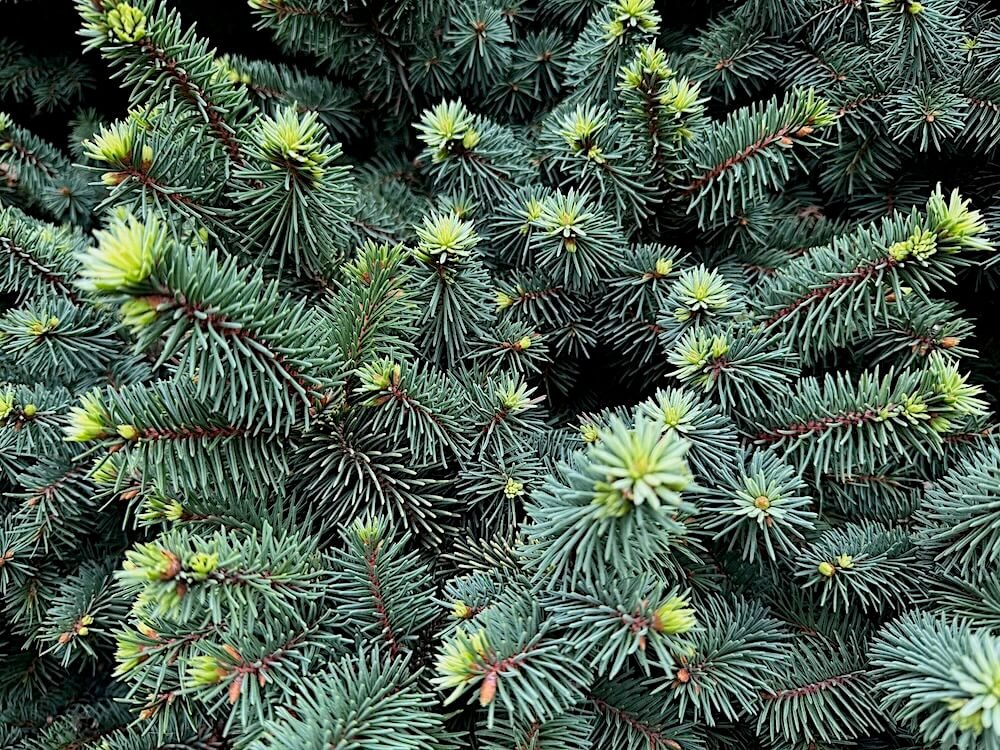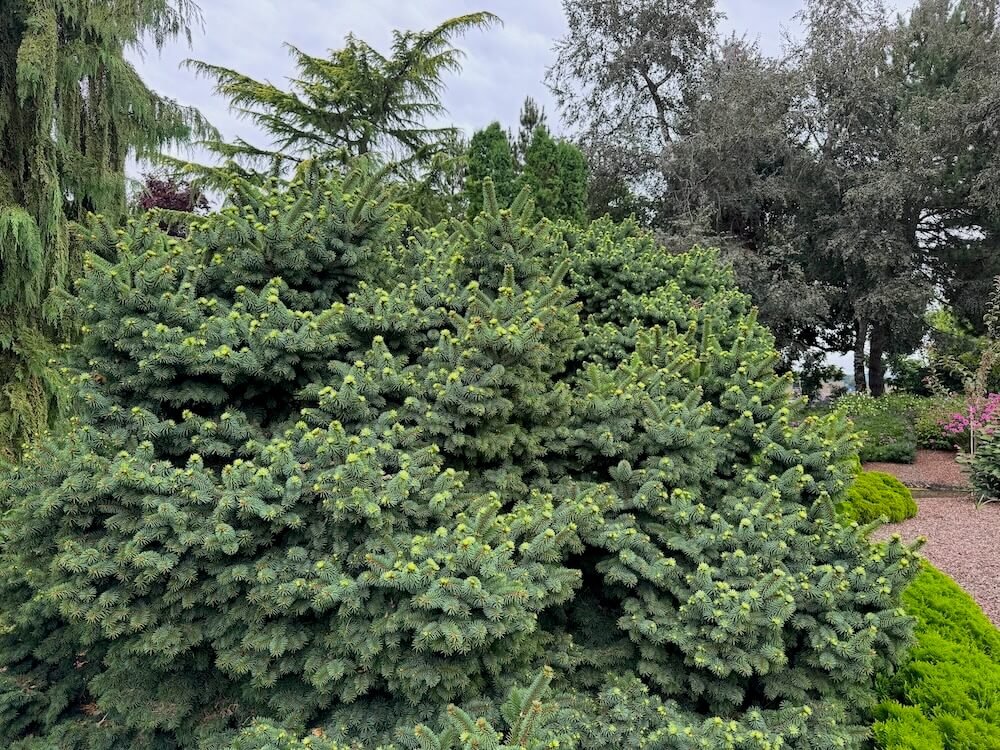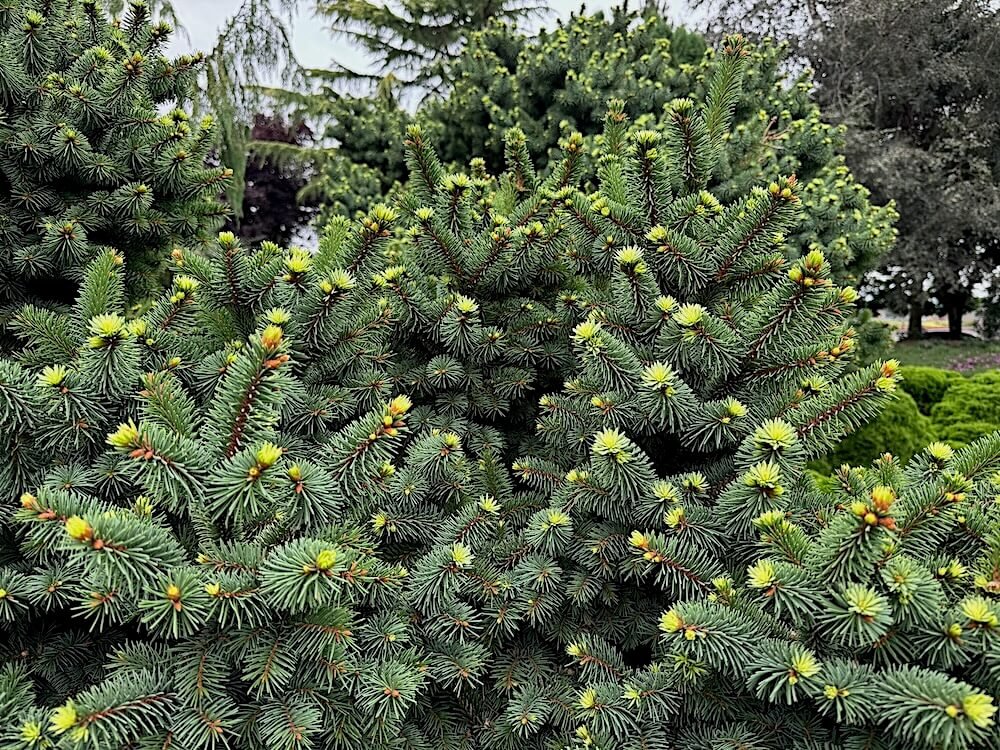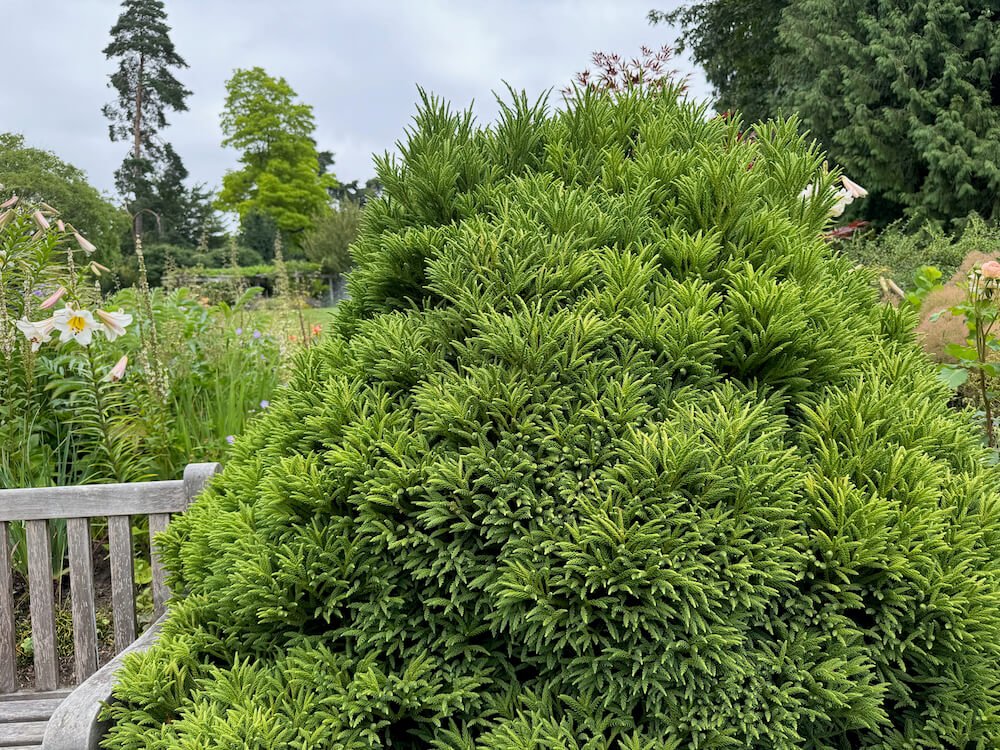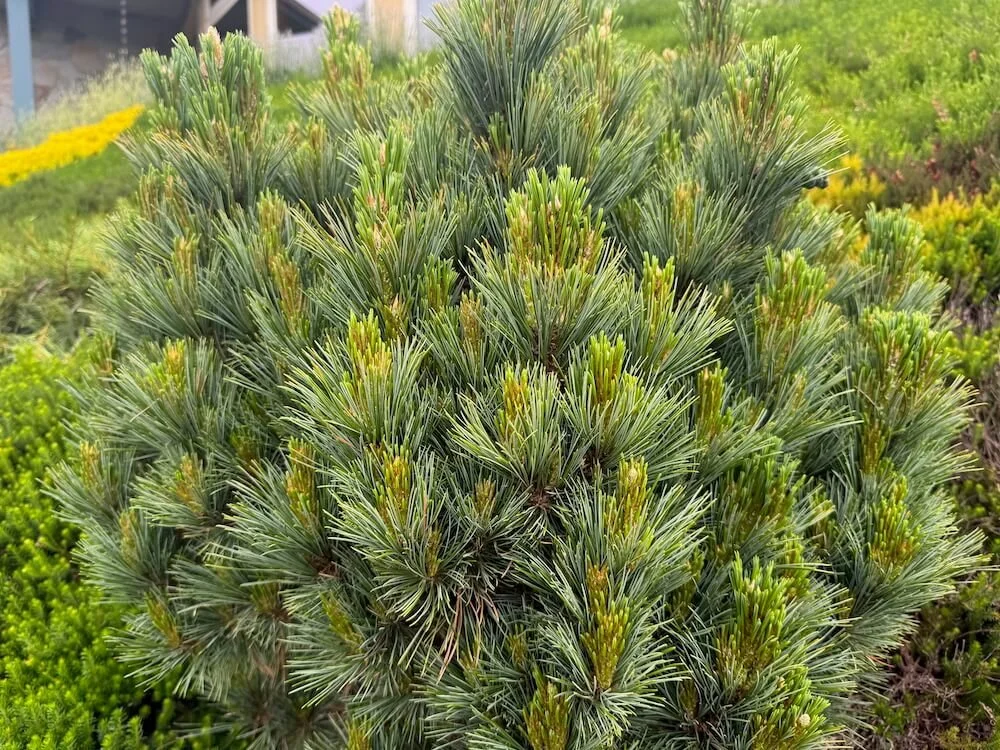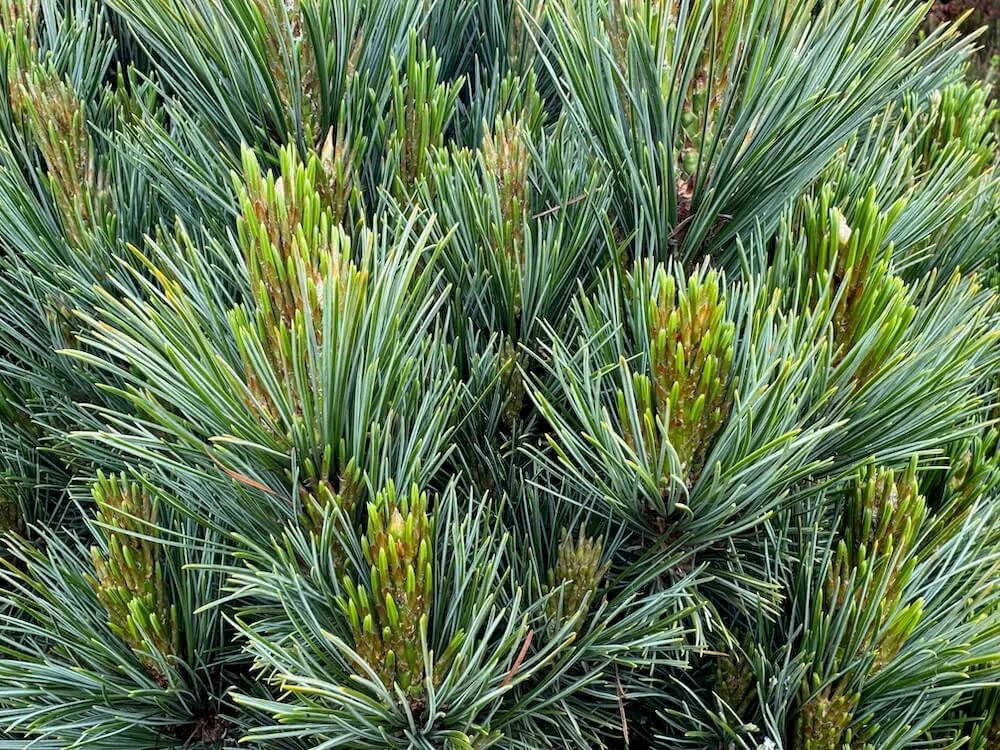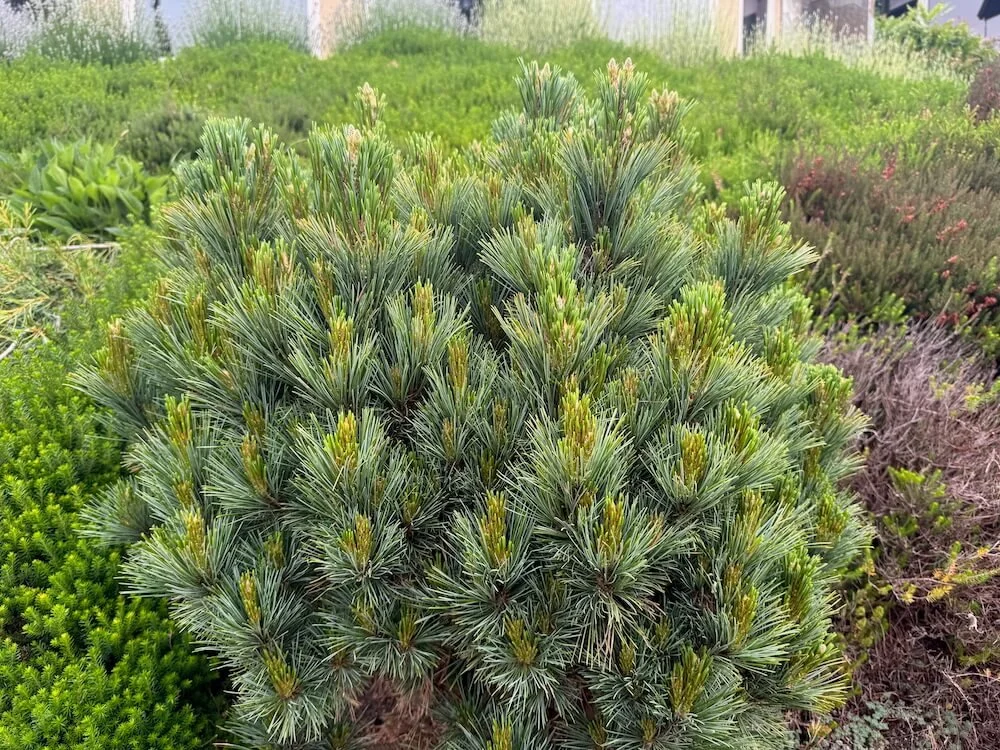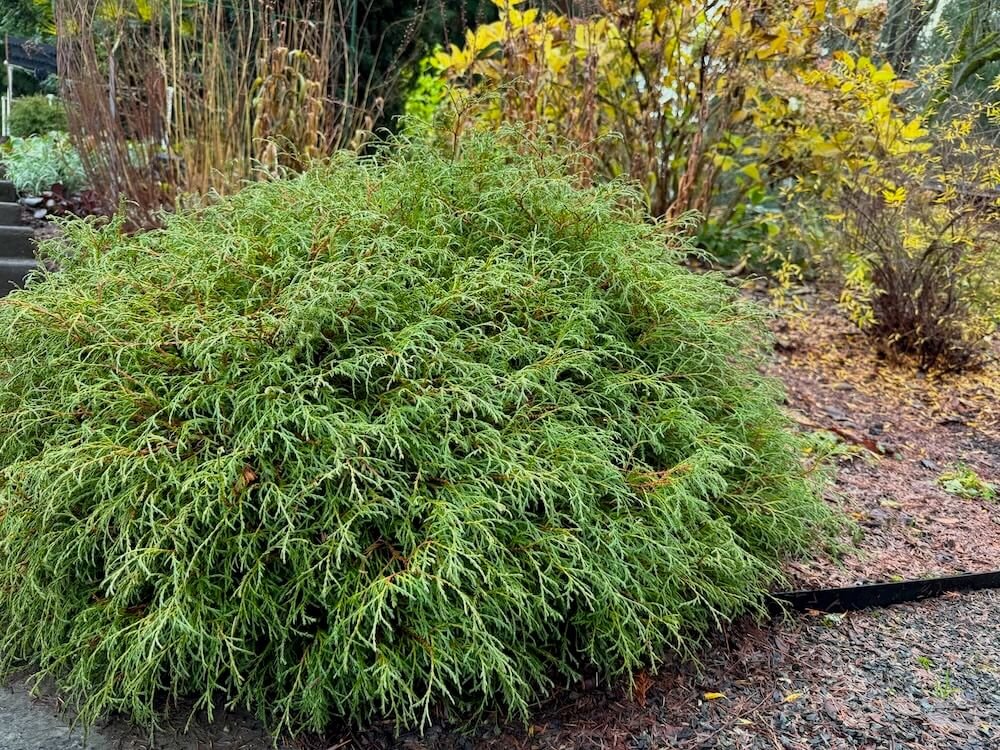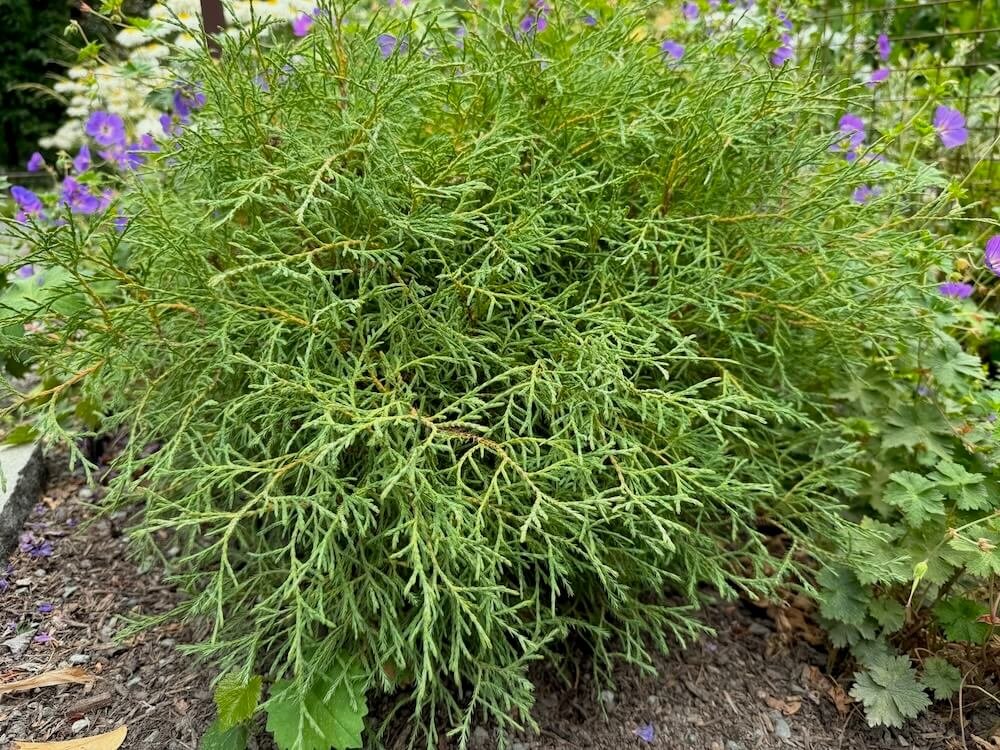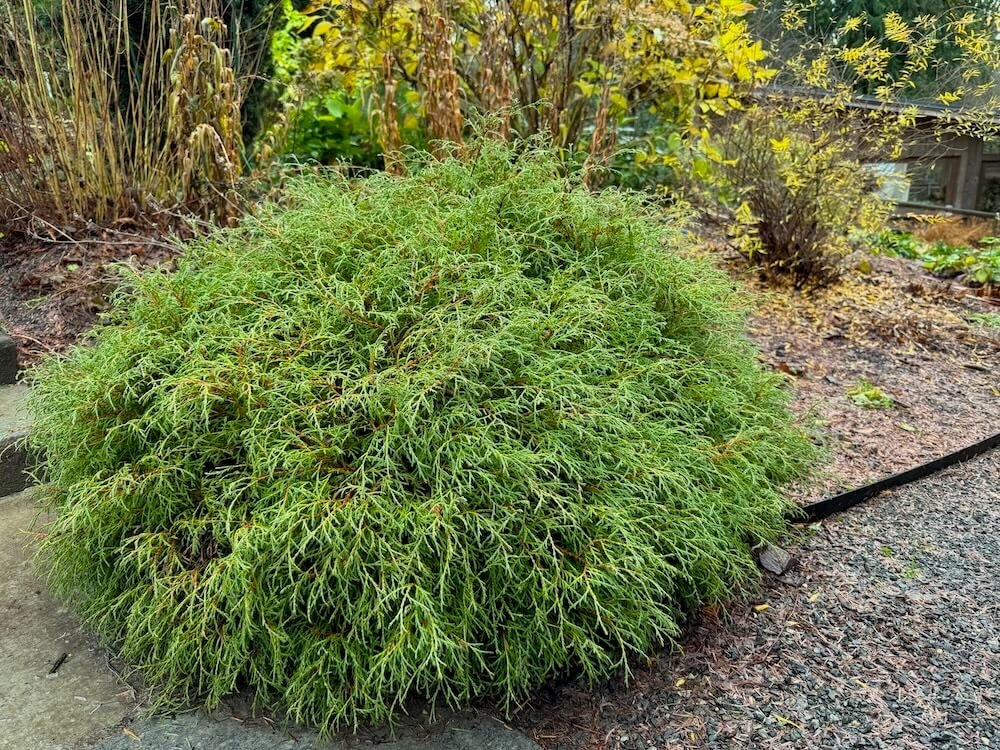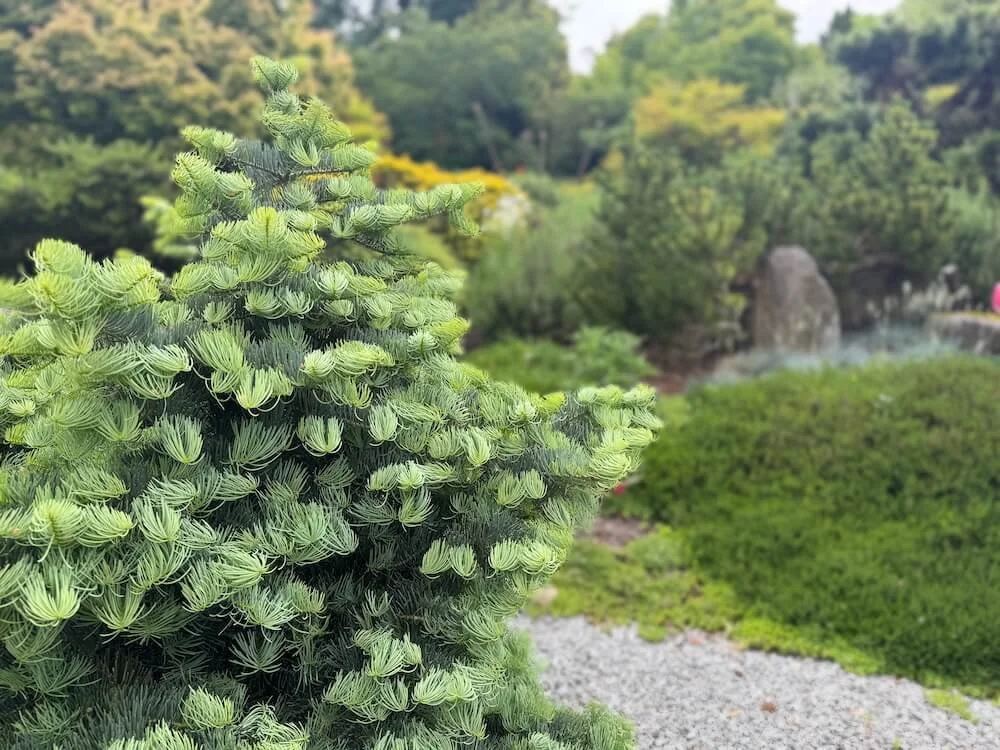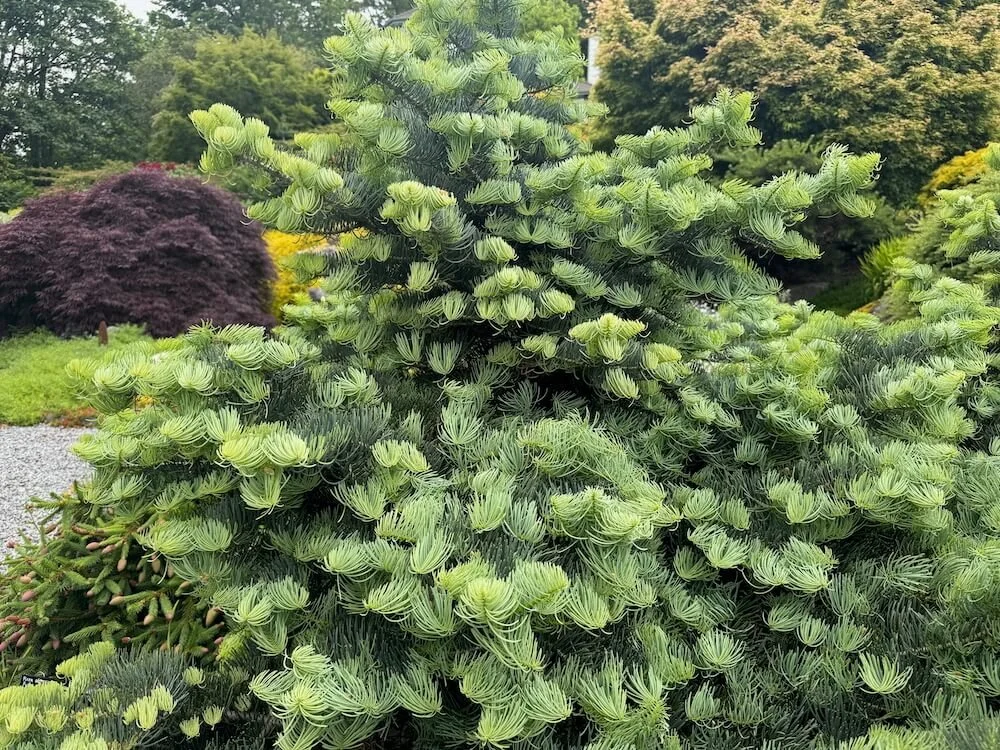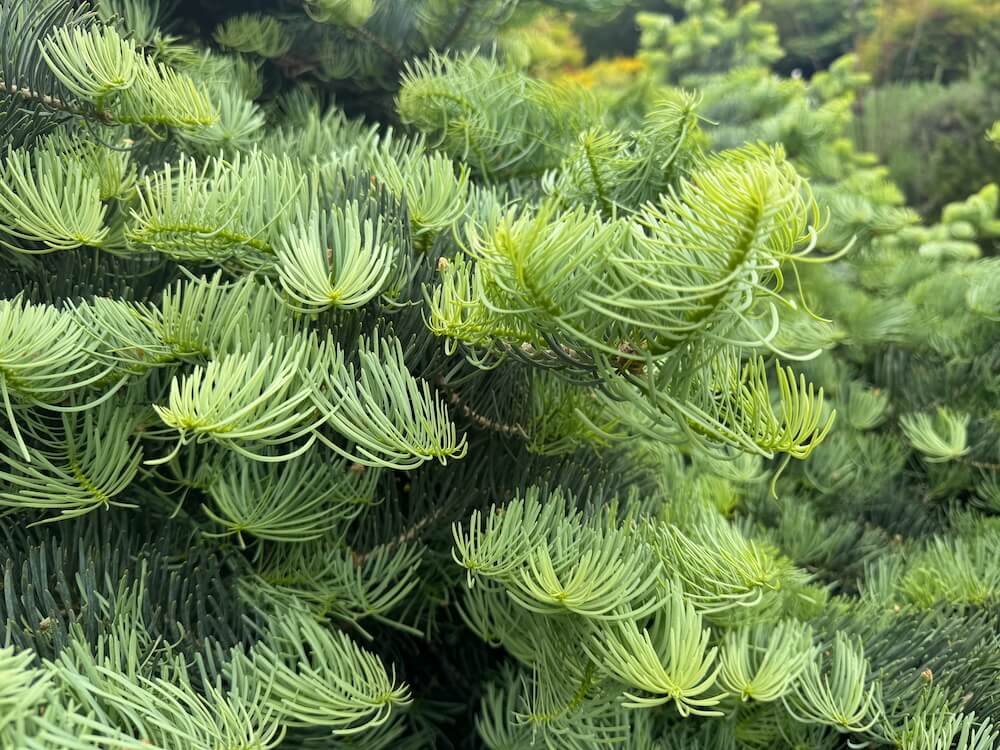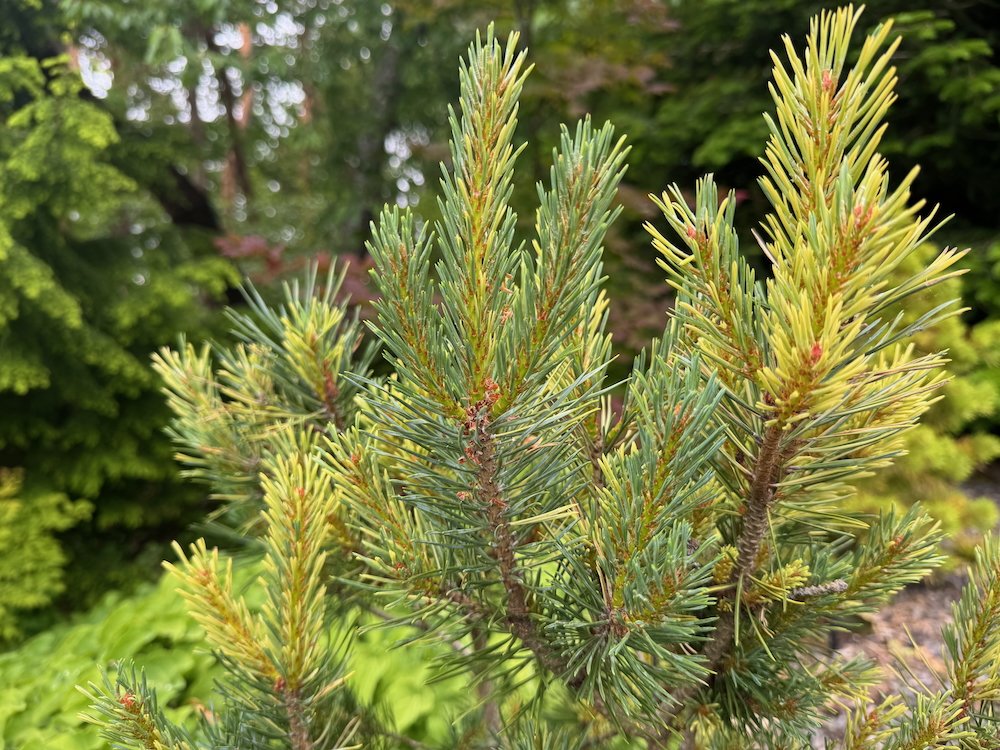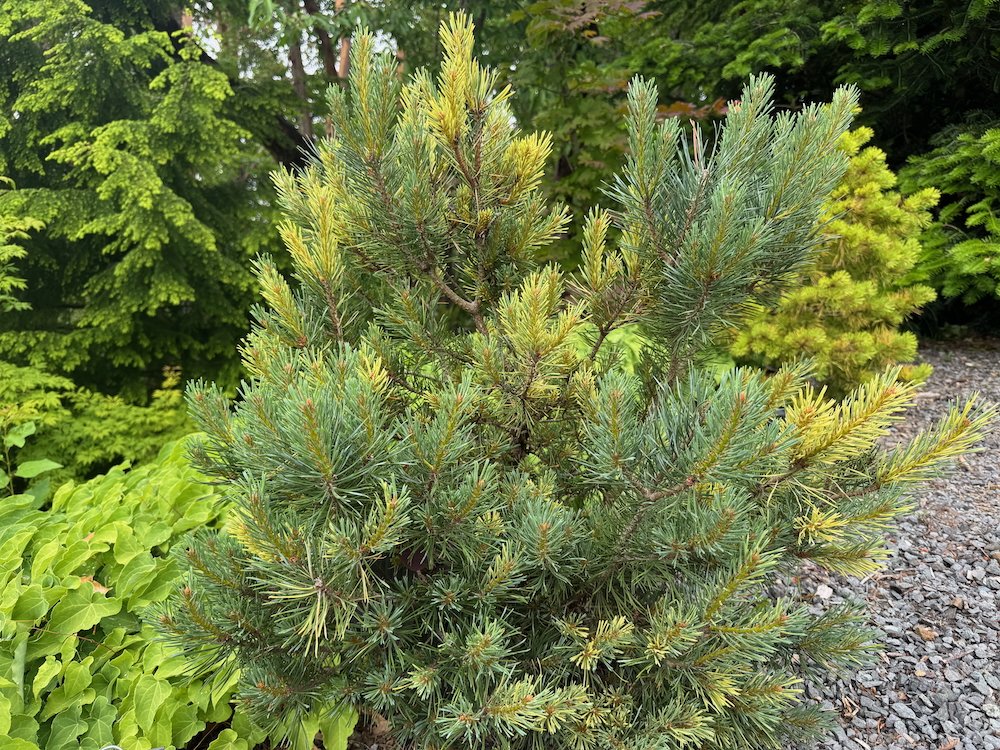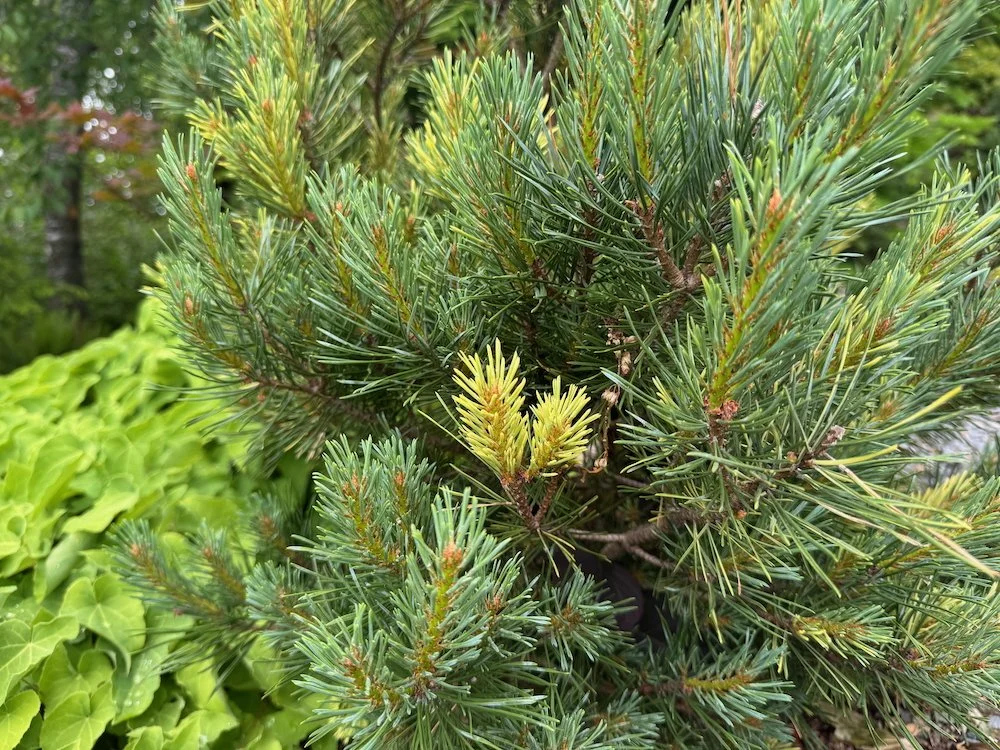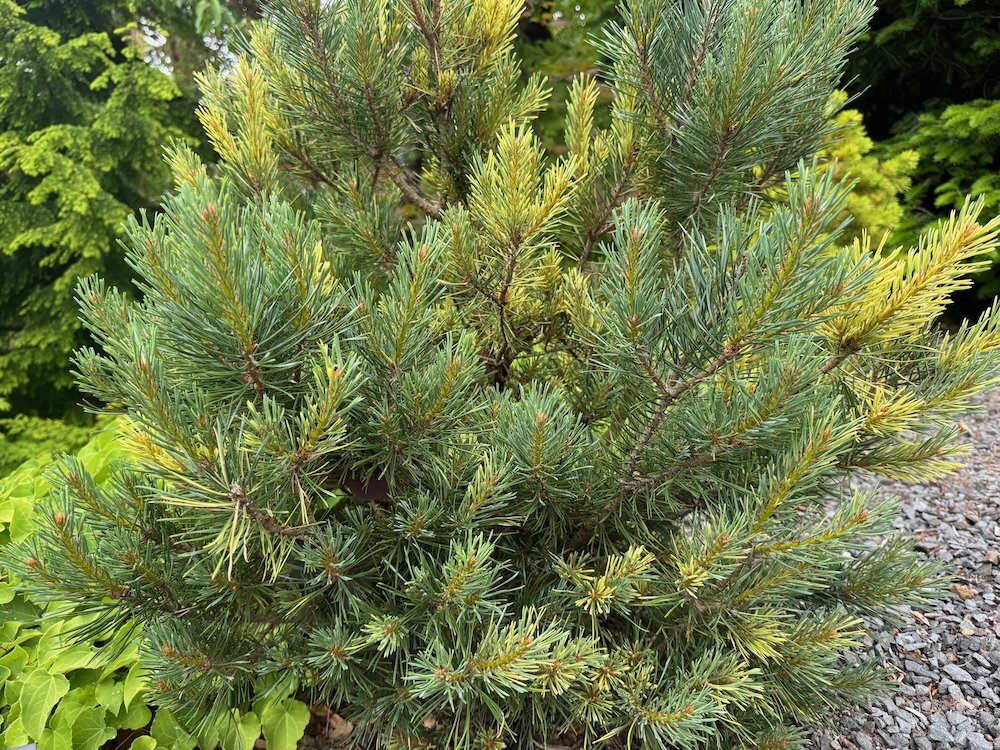DESCRIPTION
Picea pungens 'Mrs. Cesarini', a dwarf Colorado blue spruce, is a slow-growing, evergreen conifer known for its compact, globose form. Over time, it develops a low, wide cushion-like shape. Its dense, short branches are adorned with soft green-blue needles, complemented by vibrant orange new shoots in late winter to early spring, creating a beautiful seasonal contrast. This conifer originated from a witch’s broom discovered by Joe Cesarini in New York during the late 1970s. Its manageable size and distinctive aesthetic make it ideal for rock gardens, container planting, or small landscapes.
This cultivar thrives in full sun, tolerating cold climates and occasional dry conditions. Native to North America’s Rocky Mountains, the species is adapted to a range of soils, including those with limestone, and offers an elegant and unique touch to any garden.
DESCRIPTION
Picea pungens 'Mrs. Cesarini', a dwarf Colorado blue spruce, is a slow-growing, evergreen conifer known for its compact, globose form. Over time, it develops a low, wide cushion-like shape. Its dense, short branches are adorned with soft green-blue needles, complemented by vibrant orange new shoots in late winter to early spring, creating a beautiful seasonal contrast. This conifer originated from a witch’s broom discovered by Joe Cesarini in New York during the late 1970s. Its manageable size and distinctive aesthetic make it ideal for rock gardens, container planting, or small landscapes.
This cultivar thrives in full sun, tolerating cold climates and occasional dry conditions. Native to North America’s Rocky Mountains, the species is adapted to a range of soils, including those with limestone, and offers an elegant and unique touch to any garden.

